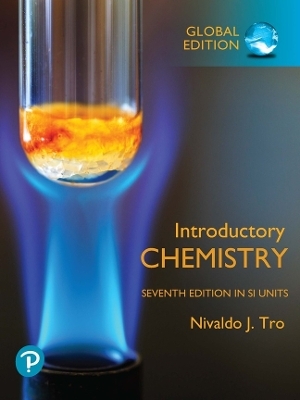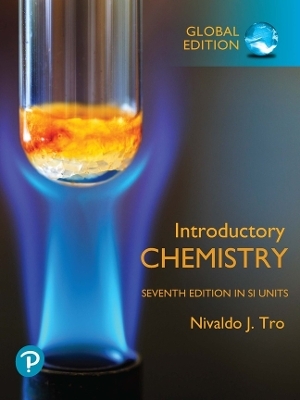
Absorption and Drug Development – Solubility, Permebility, and Charge State, Second Edition
John Wiley & Sons Inc (Hersteller)
978-1-118-28606-7 (ISBN)
- Keine Verlagsinformationen verfügbar
- Artikel merken
Explains how to perform and analyze the results of the latest physicochemical methods With this book as their guide, readers have access to all the current information needed to thoroughly investigate and accurately determine a compound's pharmaceutical properties and their effects on drug absorption. The book emphasizes oral absorption, explaining all the physicochemical methods used today to analyze drug candidates. Moreover, the author provides expert guidance to help readers analyze the results of their studies in order to select the most promising drug candidates.
This Second Edition has been thoroughly updated and revised, incorporating all the latest research findings, methods, and resources, including: Descriptions and applications of new PAMPA models, drawing on more than thirty papers published by the author's research group Two new chapters examining permeability and Caco-2/MDCK and permeability and the blood-brain barrier Expanded information and methods to support pKa determination New examples explaining the treatment of practically insoluble test compounds Additional case studies demonstrating the use of the latest physicochemical techniques New, revised, and expanded database tables throughout the book Well over 200 drawings help readers better understand difficult concepts and provide a visual guide to complex procedures. In addition, over 800 references serve as a gateway to the primary literature in the field, facilitating further research into all the topics covered in the book. This Second Edition is recommended as a reference for researchers in pharmaceutical R&D as well as in agrochemical, environmental, and other related areas of research.
It is also recommended as a supplemental text for graduate courses in pharmaceutics.
ALEX AVDEEF , PhD, is the founder of in-ADME Research. He has more than thirty years of experience in chemical instrumentation and software development. Internationally recognized as an authority in the field of solution chemistry, Dr. Avdeef has an extensive list of scholarly publications to his credit.
Preface xxiii Preface to the First Edition xxvii List of Abbreviations xxxi Nomenclature xxxv Commercial Trademarks xli 1 Introduction 1 1.1 Bulldozer Searching for a Needle in the Haystack?, 1 1.2 As the Paradigm Turns, 4 1.3 Screen for the Target or ADME First?, 5 1.4 ADME and Multimechanism Screens, 6 1.5 ADME and the Medicinal Chemist, 7 1.6 The "Absorption" in ADME, 8 1.7 It Is Not Just a Number, It Is a Multimechanism, 9 References, 9 2 Transport Model 12 2.1 Permeability--Solubility--Charge State and pH-Partition Hypothesis, 12 2.2 Properties of the Gastrointestinal Tract (GIT), 17 2.3 pH Microclimate, 22 2.4 Intracellular pH Environment, 23 2.5 Tight Junction Complex, 23 2.6 Structure of Octanol, 23 2.7 Biopharmaceutics Classification System, 25 References, 26 3 pKa Determination 31 3.1 Charge State and the pKa, 32 3.2 Methods of Choice for the Determination of the pKa, 34 3.3 Titration with a Glass-Membrane pH Electrode, 34 3.4 Equilibrium Equations and the Ionization Constant, 38 3.5 "Pure Solvent" Activity Scale, 41 3.6 Ionic Strength and Debye--Huckel/Davies Equation, 41 3.7 "Constant Ionic Medium" Activity Scale, 43 3.8 Temperature Dependence of pKa Values, 47 3.9 Electrode Calibration and Standardization, 55 3.10 Bjerrum Plot: Most Useful Graphical Tool in pKa Analysis, 66 3.11 Cosolvent Methods for pKa Determination of Practically Insoluble Substances, 78 3.12 Other Methods for pKa Measurement, 96 3.13 pKa Microconstants, 102 3.14 pKa Compilations, 107 3.15 pKa Prediction Programs, 107 3.16 Database of pKa (25degreeC and 37degreeC), 107 Appendix 3.1 Quick Start: Determination of the pKa of Codeine, 127 Appendix 3.2 Tutorial for Measurements with Glass-Membrane pH Electrode, 130 Appendix 3.3 pH Convention Adopted by IUPAC and Supported by NIST, 137 Appendix 3.4 Liquid-Junction Potentials (LJP), 140 Appendix 3.5 pKa Refi nement by Weighted Nonlinear Regression, 146 Appendix 3.6 Molality to Molarity Conversion, 157 References, 158 4 Octanol--Water Partitioning 174 4.1 Overton--Hansch Model, 175 4.2 Tetrad of Equilibria, 175 4.3 Conditional Constants, 177 4.4 log P Data Sources, 178 4.5 log D Lipophilicity Profile, 178 4.6 Ion-Pair Partitioning, 183 4.7 Micro-log P, 187 4.8 Methods for log P Determination, 188 4.9 Dyrssen Dual-Phase Titration log P Method, 189 4.10 Ionic Strength Dependence of log P, 194 4.11 Temperature Dependence of log P, 194 4.12 Calculated versus Measured log P of Research Compounds, 194 4.13 log D versus pH Case Study: Procaine Structural Analogs, 196 4.14 Database of Octanol--Water log PN, log PI, and log D7.4, 201 References, 209 5 Liposome--Water Partitioning 220 5.1 Biomimetic Lipophilicity, 221 5.2 Tetrad of Equilibria and Surface Ion-Pairing (SIP), 221 5.3 Data Sources, 222 5.4 Location of Drugs Partitioned into Bilayers, 222 5.5 Thermodynamics of Partitioning: Entropy- or Enthalpy-Driven?, 223 5.6 Electrostatic and Hydrogen Bonding in a Low Dielectric Medium, 224 5.7 Water Wires, H+/OH- Currents, and Permeability of Amino Acids and Peptides, 227 5.8 Preparation Methods: MLV, SUV, FAT, LUV, ET, 228 5.9 Experimental Methods, 229 5.10 Prediction of log PMEM from log POCT, 229 5.11 log DMEM, diff log PMEM, and Prediction of log PSI M P EM from log PI OCT, 233 5.12 Three Indices of Lipophilicity: Liposomes, IAM, and Octanol, 238 5.13 Getting It Wrong from One-Point log DMEM Measurement, 239 5.14 Partitioning into Charged Liposomes, 240 5.15 pKa MEM Shifts in Charged Liposomes and Micelles, 240 5.16 Prediction of Absorption from Liposome Partition Studies?, 241 5.17 Database of log PMEM and log PSI M P EM, 242 References, 245 6 Solubility 251 6.1 It's Not Just a Number, 252 6.2 Why Is Solubility Measurement Difficult?, 252 6.3 Mathematical Models for Solubility--pH Profiles, 255 6.4 Experimental Methods, 270 6.5 Correction for the DMSO Effect by the "DELTA-Shift" Method, 287 6.6 Case Studies (Solubility--pH Profi les), 289 6.7 Limits of Detection--Precision versus Accuracy, 306 6.8 Data Sources and the "Ionizable-Drug Problem," 308 6.9 Database of log S0, 308 References, 310 7 Permeability--PAMPA 319 7.1 Permeability in the Gastrointestinal Tract, 320 7.2 Historical Developments in Permeability Models, 323 7.3 Rise of PAMPA--A Useful Tool in Early Drug Discovery, 336 7.4 PAMPA-HDM, -DOPC, -DS Models Compared, 343 7.5 Modeling Biological Membranes, 354 7.6 Permeability--pH Relationship and the Mitigating Effect of the Aqueous Boundary Layer, 362 7.7 pKa FLUX-Optimized Design (pOD), 386 7.8 Cosolvent PAMPA, 389 7.9 UV versus LC/MS Detection, 397 7.10 Assay Time Points, 400 7.11 Buffer Effects, 402 7.12 Apparent Filter Porosity, 404 7.13 PAMPA Errors: Intra-Plate and Inter-Plate Reproducibility, 407 7.14 Human Intestinal Absorption (HIA) and PAMPA, 409 7.15 Permeation of Permanently Charged Molecules, 416 7.16 Permeation of Zwitterions/Ampholytes--In Combo PAMPA, 424 7.17 PAMPA in Formulation: Solubilizing Excipient Effects, 433 7.18 Database of Double-Sink PAMPA log P0, log Pm 6.5, and log Pm 7.4, 448 Appendix 7.1 Quick Start: Double-Sink PAMPA of Metoprolol, 460 Appendix 7.2 Permeability Equations, 465 Appendix 7.3 PAMPA Paramembrane Water Channels, 481 References, 484 8 Permeability: Caco-2/MDCK 499 8.1 Permeability in the Gastrointestinal Tract, 500 8.2 Cell-Based In Vitro Permeability Model, 505 8.3 In Situ Human Jejunum Permeability (HJP) Model, 514 8.4 Passive Intrinsic Permeability Coefficients of Caco-2 and MDCK Compared, 515 8.5 Theory (Stage 1): Paracellular Leakiness and Size Exclusion in Caco-2, MDCK, and 2/4/A1 Cell Lines, 516 8.6 Theory (Stage 2): Regression Method for In Vitro Cellular Permeability, 524 8.7 Case Studies of Cell-Based Permeability as a Function of pH, 525 8.8 Human Jejunal Permeability Predicted Directly from Caco-2/MDCK, 533 8.9 Caco-2/MDCK Database and Its In Combo PAMPA Prediction, 550 References, 563 9 Permeability: Blood--Brain Barrier 575 9.1 The Blood--Brain Barrier: A Key Element for Drug Access to the Central Nervous System, 576 9.2 The Blood--Brain Barrier, 576 9.3 Noncellular BBB Models, 580 9.4 In Vitro BBB Cell-Based Models, 586 9.5 In Vivo BBB Models, 589 9.6 Paradigm Shift, 592 9.7 In Silico BBB Models, 608 9.8 Biophysical Analysis of In Vitro Endothelial Cell Models, 608 9.9 In Situ Brain Perfusion Analysis of Flow, 618 9.10 In Combo PAMPA--BBB Model for Passive BBB Permeability, 631 References, 663 10 Summary and Some Simple Approximations 681 Index 685
| Erscheint lt. Verlag | 8.5.2012 |
|---|---|
| Verlagsort | New York |
| Sprache | englisch |
| Maße | 150 x 250 mm |
| Gewicht | 666 g |
| Themenwelt | Naturwissenschaften ► Chemie |
| Technik | |
| ISBN-10 | 1-118-28606-5 / 1118286065 |
| ISBN-13 | 978-1-118-28606-7 / 9781118286067 |
| Zustand | Neuware |
| Haben Sie eine Frage zum Produkt? |
aus dem Bereich


